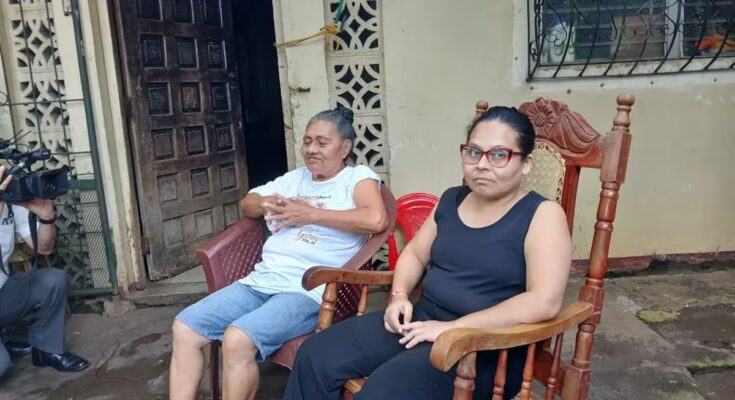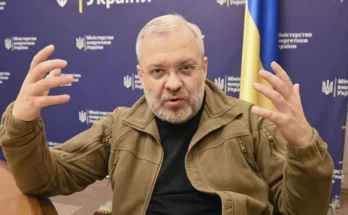The co-presidents of Nicaragua, Daniel Ortega and Rosario Murillo, resorted this Tuesday to an old cover-up tactic: freeing and exposing political prisoners who were in a condition of forced disappearance. The move comes on the eve of a crucial decision for the Sandinista regime: Donald Trump’s administration will have to decide whether to expel the Central American country from the DR-Cafta free trade agreement or impose 100% tariffs on it, due to systematic human rights violations in the Central American country that are “a burden on American trade” – according to an investigation by the Office of the Trade Representative in Washington.
Throughout the morning, the Sandinista propaganda media showed the communicator Fabiola Tercero, one year and four months after her detention, her house searched and disappeared from public radar. “Another lie falls on the traitors”, headlined the official media, in an attempt to discredit all the rumors demanding to know the whereabouts of the communicator.
In a tactic previously used by the co-presidential regime and classified by human rights organizations as “forced confessions,” Tercero said, encouraged by pro-government journalists, that “in recent years she has been at home with her mother, in the William Díaz neighborhood, District II of Managua.” Four days earlier, the regime had also quietly released five other political prisoners, including journalist Leo Cárcamo.
In the previous months, the US Embassy in Managua had campaigned on behalf of Tercero and Cárcamo. They demanded that the Managua regime provide evidence of the communicators’ lives and reveal their whereabouts. Therefore, political analysts consulted by EL PAÍS interpret the release and exhibition of these people as an attempt by the two-headed presidency to once again use political prisoners as bargaining chips for its interests. On November 19, the Office of the United States Trade Representative (USTR) will conclude a public consultation phase of its investigation that will conclude that the regime’s “policies, acts, and practices are “unreasonable and constitute a burden or restriction” on North American trade, according to the resolution issued under Section 301 of the Trade Act of 1974.
What the USTR will put on the Oval Office table will be options that will represent a lethal blow to the economy of Nicaragua, whose main trading partner is Washington: expulsion from DR-Cafta, the capital trade agreement for Nicaragua, and the imposition of 100% tariffs. A measure that has always been feared in Managua, especially by North American entrepreneurs in the textile, tobacco and coffee sectors with interests in the Central American country, and who have exerted strong pressure in the US capital so that they do not receive such a deadly blow, despite the serious violations of human rights.
“And that’s when political prisoners become bargaining chips again,” Salvador Lucio Marenco, human rights lawyer for the Nicaragua Never Again Collective, tells EL PAÍS. “In addition to the deliberation on the free trade agreement, there is another important fact: for the first time in a long time the dictatorship showed its face to the international community in the Third Commission of the United Nations, when the Panel of Experts presented its report on crimes against humanity. In that session, the deputy ambassador of Nicaragua “expressed the regime’s concern regarding sanctions and economic measures.”
Will the United States fall again?
It is not the first time that the Ortega-Murillos have released political prisoners to obtain pressure or concessions from the international community. In this sense, former opposition representative Eliseo Núñez believes that these latest premature releases are an attempt to open a negotiation – or strengthen one if there already is one – to avoid the expulsion of DR-Cafta and tariffs.
But the adversary deprived of his nationality warns that it could also be a Sandinista trick “to gain time” in consolidating the relationship with China, after the creation of Special Zones that are costly for Asian interests. “To allow Chinese companies to export to the United States under the aegis of CAFTA, avoiding sanctions and tariffs,” analyzes Núñez. “As I have already told you, keeping Nicaragua in CAFTA would be a mistake.”
Juan Carlos Gutiérrez, a researcher and also denationalized, instead aims to warn the United States: the maneuver to free political prisoners is an old tactic that does not produce any fundamental change, he insists. When the Ortega-Murillos realize their profits, they return to entrench themselves in repression. “What they are doing is administering the terror that they have already sown in an important part of the population, because these releases fulfill three objectives at once,” he emphasizes. And he begins to list: “Reduce the political cost of keeping hundreds of people unjustly imprisoned, reduce the economic expense of keeping them in prison and transfer the psychological and material burden onto their families. They release people who are afraid, as in the case of Fabiola Tercero; without being able to communicate, without work and under constant surveillance.”
For now the last political prisoners don’t want to talk to anyone, much less their family members, and every day they have to go to a police station to sign an attendance certificate. In the meantime, the economic future of Nicaragua, over 55% of whose trade goes to the United States, will be in the hands of President Trump, with the mediation of Secretary of State Marco Rubio.



